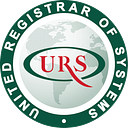Navigating the CE Marking Process for Market Access in the European Economic Area
The CE marking is often considered a passport allowing products to be freely marketed and sold within the EEA without needing additional national certifications. The CE marking Certification applies to a wide range of products that fall within the scope of European Union (EU) directives or regulations. It is required for products that are intended to be sold or placed on the market within the European Economic Area (EEA). The EEA includes the member states of the European Union as well as Norway, Iceland, Liechtenstein, and, in certain circumstances, Switzerland.
The CE marking does not apply to all products, but rather to those for which specific EU directives or regulations require it. It serves as a visible declaration by the manufacturer that their product meets the necessary safety and environmental requirements for sale within the EEA.
To obtain the CE marking, manufacturers must follow the relevant EU directives or regulations applicable to their specific product category. This process involves assessing the product’s conformity with the essential requirements, conducting necessary tests, and preparing the required documentation. Depending on the product, conformity assessment procedures may involve self-declaration by the manufacturer or third-party involvement, such as a notified body.
The specific products to which the CE marking applies depend on the relevant EU directive or regulation associated with each product category. Some common product categories that require CE marking include:
• Machinery: This includes equipment with moving parts, used in various industries such as industrial machinery, construction machinery, and agricultural machinery.
• Electrical and Electronic Equipment: Encompasses a broad spectrum of products, including household appliances (e.g., refrigerators, washing machines), information technology equipment (e.g., computers, printers), and medical devices with electronic components.
• Toys: All toys intended for use by children, ensuring they meet safety and health standards.
• Personal Protective Equipment (PPE): Products designed to protect individuals from hazards, such as safety helmets, gloves, eye protection, and protective clothing.
• Medical Devices: Includes a wide range of products used for medical purposes, such as diagnostic equipment, surgical instruments, and medical implants.
• Construction Products: Materials and products used in construction projects, such as doors, windows, insulation materials, and structural components.
• Pressure Equipment: Covers products subject to pressure, such as boilers, gas cylinders, and pressure vessels.
• Radio and Telecommunications Terminal Equipment: Devices that use the radio frequency spectrum or are connected to public telecommunications networks, including mobile phones, radio transmitters, and communication devices.
For each of these categories, manufacturers must adhere to the specific requirements outlined in the relevant EU directives or regulations. Compliance involves thorough testing, documentation, and conformity assessment procedures to ensure the product meets the essential health and safety requirements before affixing the CE marking.
